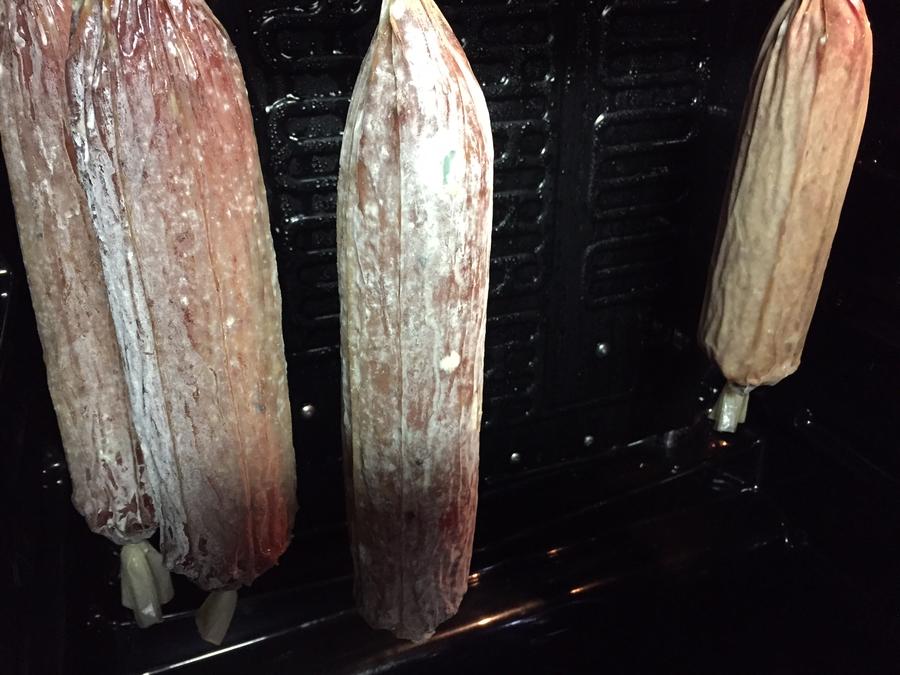- Mar 20, 2017
- 27
- 10
Hi guys. I have a question about this salami I've had in the chamber for about 7 weeks now. I bought a kit from sausagemaker.com and followed the instructions. I have the salami at ~45 degrees with a ~75% humidity ( I had it higher in the first 4 weeks maybe 82%)
and some parts of the salami feel soft. Furthermore, the casings are very sticky and growing some green mold which I wipe with a mix of water and vinegar. The salamis smell fine so I'm not concerned with spoilage. But the stickiness of the casings worries me. Have you had any experience with this? I thought that maybe the humidity was too high so I lowered it to 73%.
https://www.sausagemaker.com/Dry-Cured-Hard-Salami-Kit-p/12-1616.htm
Any help is appreciated.
Thank you all.
and some parts of the salami feel soft. Furthermore, the casings are very sticky and growing some green mold which I wipe with a mix of water and vinegar. The salamis smell fine so I'm not concerned with spoilage. But the stickiness of the casings worries me. Have you had any experience with this? I thought that maybe the humidity was too high so I lowered it to 73%.
https://www.sausagemaker.com/Dry-Cured-Hard-Salami-Kit-p/12-1616.htm
Any help is appreciated.
Thank you all.









